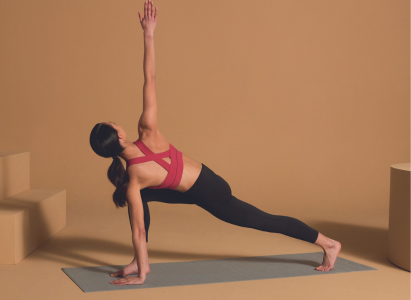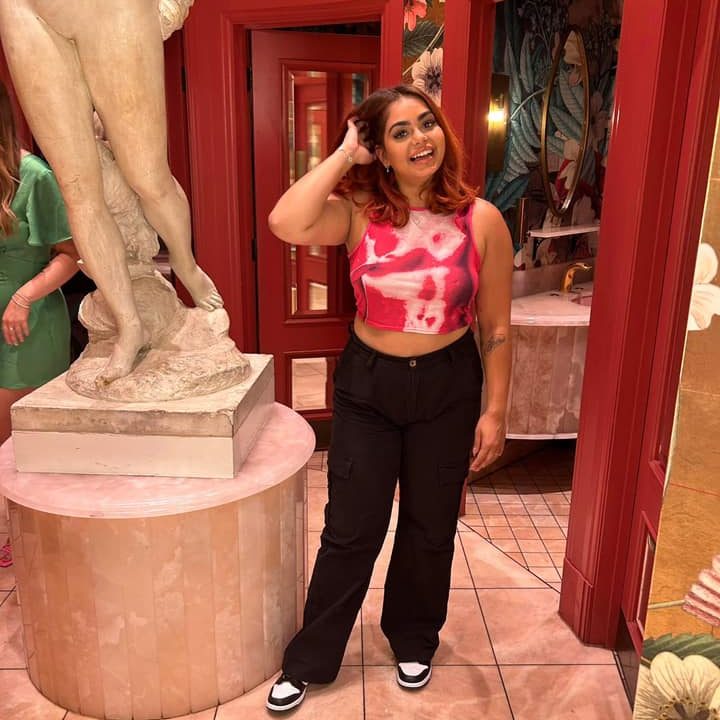Hatha Yoga
Hatha meaning force, first started back in the 13th century and focused largely on postures and breathing exercises. Today Hatha yoga refers to a much broader spectrum that is used to describe many different forms of yoga that is practised today that used poses along with breathing techniques.
Hatha yoga uses number of different challenging poses that are that are practised slowly, these poses challenge your strength allowing you build upon your core strength. Although every yoga style is different, there are many other yoga styles that actually fall under the Hatha definition, these include Ashtanga, Restorative and Vinyasa.
Overall, Hatha yoga creates a relaxing environment allowing you to focus on mindfulness so you can reap all the benefits of participating in yoga.
Yoga Nidra
Nidra is arguably the easiest type of yoga you can participate in, it basically just involves lying down!
Yoga Nidra is commonly referred to as yogic sleep as the concept encourages you to lie down on the floor in a state between sleep and consciousness whilst you let systematic meditation take you through the process of feeling whole. While actually falling asleep isn't encouraged, you may still reap benefits from the meditation even if you do snooze.
Anyone can participate in this form of yoga, all you need is yourself and a space big enough for you to lie down.
Yin Yoga
Yin yoga is a slow, meditative yoga that targets your connective tissues such as your ligaments and joints with the aim to improve your flexibility. With yin yoga, poses are often held for a longer period of time that normal yoga, usually for around 5 minutes but can also be held for a lot longer. This type of yoga also teaches you how to breathe through the difficulty of holding a pose for so long.
Kundalini Yoga
Kundalini yoga focus on repeated movements and breathing techniques which can be challenging.
The main difference of this yoga style is that is that it can also involve chanting, meditation and mantras too! This style was made to use the energy at the base of the spine and draw it upwards through each of the seven chakras.
During Kundalini yoga you would expect to see an opening chant followed by a brief warm-up for your spine. The actual yoga sequence will include poses and breathing techniques that can be fast moving (which will really work your core muscles) and will end with a closing song or chant.
Ashtanga yoga
Ashtanga yoga is typically fast paced and challenging yoga that incorporates a series of postures whereby your breathing is linked with movement.
It's made up of six series, the primary, secondary and four advanced levels, each series will include a set of poses. This synchronised breathing and movement helps to create internal heat in the body which hosts a number of benefits including, purifying and detoxifying the body and mind whilst also improving circulation.
Hot Yoga
Hot yoga is exactly that. Yoga, but in a heated room.
Typically the room will be heated 27 and 38°C, as the heat intensifies it allows you to burn a considerable amount of calories, allowing hot yoga to now be regularly used as a form of exercise.
Vinyasa yoga
Vinyasa yoga is often considered the most athletic form of yoga as it's more vigorous than other styles of yoga.
Vinyasa yoga uses movement that is coordinated with your breath, each movement flows nicely to the next to make a sequence of movements. This can be done either at a slow or fast pace and can use a variety of different poses but this will depend on your teacher. There are many other yoga's that can fall under Vinyasa such as Ashtanga and Power yoga.
Face Yoga
This is a fairly new form of yoga that is more for vanity purposes than anything else, this works by exercising specific facial muscles in order to keep your face looking plump. Not only can is keep your face looking youthful, it also can work to release tension, stress, and worry by stimulating your muscles.
Check out some of our latest Yoga clothes to use for your next session!

